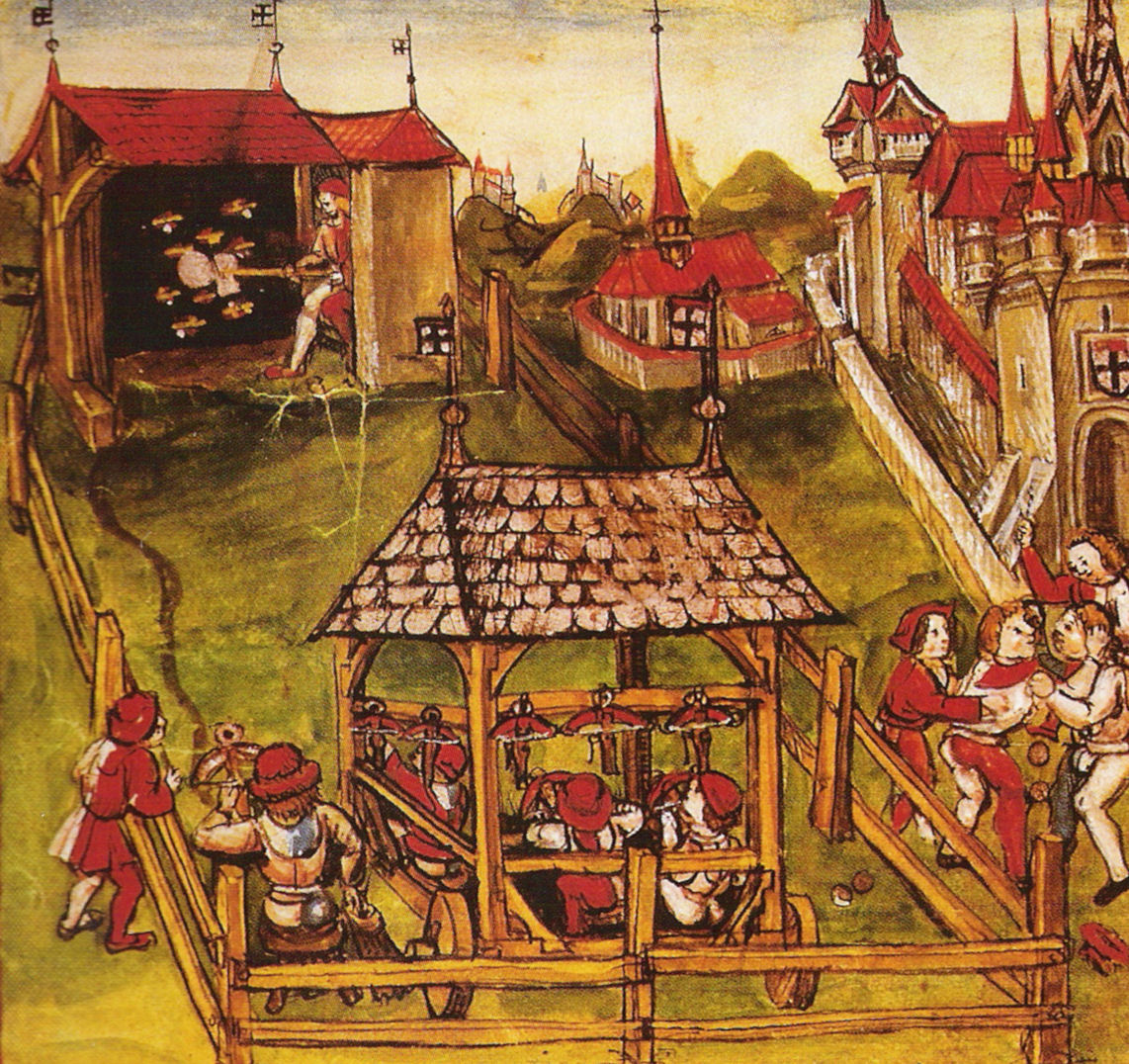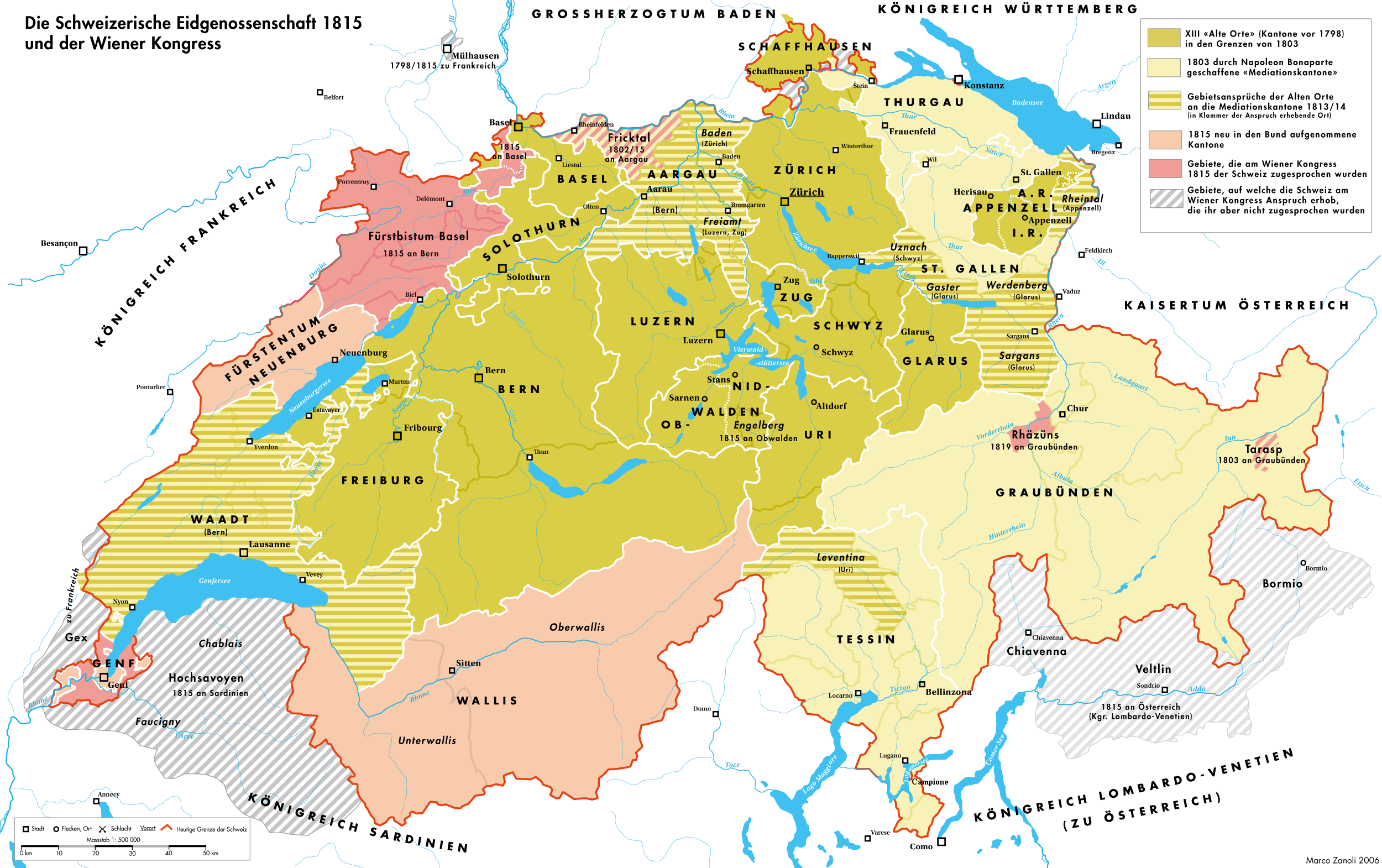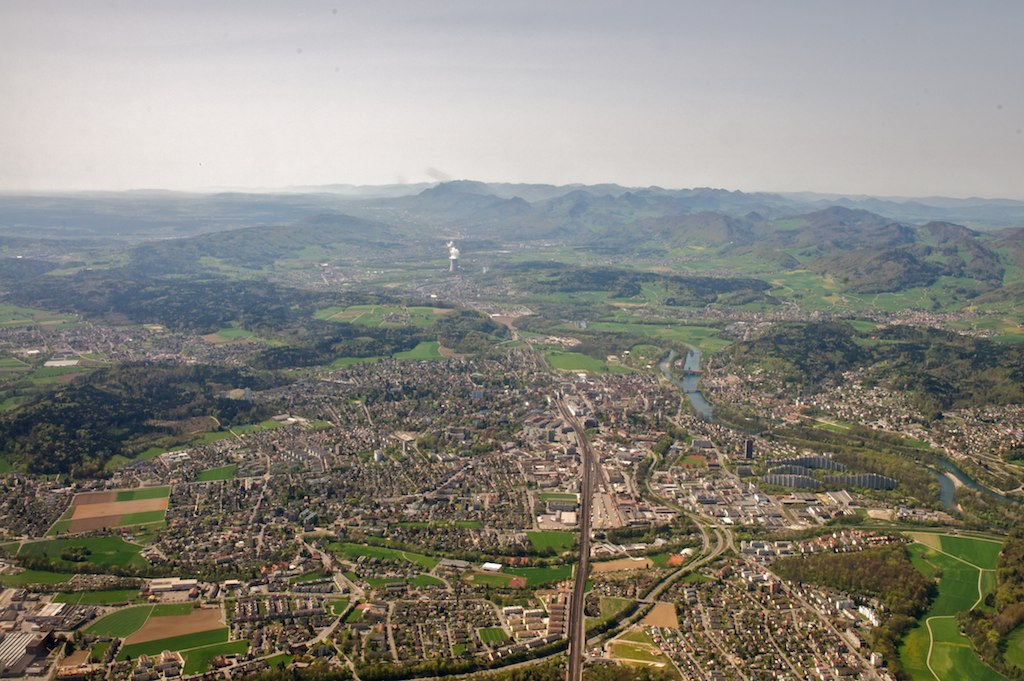|
Eidgenössisches Schützenfest
''Eidgenössische Schützenfeste'' (singular ''Eidgenössisches Schützenfest'', french: Fête Fédérale de Tir, it, Festa tiro federale ) are the Swiss federal Schützenfest, shooting competitions organized by the ''Schweizerischer Schützenverein'' since 1824. History Organised shooting societies are recorded in Swiss cities from the 14th century, at the time mostly using crossbows. The first blackpowder shooting societies are formed in the later 15th century; Geneva in 1474 had three separate societies for crossbow, longbow and arquebus shooters. ''Schützenfeste'' contributed significantly to the coherence between the individual cantons of Switzerland, cantons. After the end of the Old Zürich War (1450), the federal shooting festival in Sursee (1452) contributed to the renewal of cohesion between the members of the confederacy. Federal events became popular in the wake of the Sursee festival, with events in Feldkirch (1455), Strasbourg (1456) and Constance (1458). The s ... [...More Info...] [...Related Items...] OR: [Wikipedia] [Google] [Baidu] |
Restoration And Regeneration In Switzerland
The periods of Restoration and Regeneration in Swiss history lasted from 1814 to 1847. "Restoration" is the period of 1814 to 1830, the restoration of the ''Ancien Régime'' (federalism), reverting the changes imposed by Napoleon Bonaparte on the centralist Helvetic Republic from 1798 and the partial reversion to the old system with the Act of Mediation of 1803. "Regeneration" is the period of 1830 to 1848, when in the wake of the July Revolution the "restored" ''Ancien Régime'' was countered by the liberal movement. In the Protestant cantons, the rural population enforced liberal cantonal constitutions, partly in armed marches on the cities. This resulted in a conservative backlash in the Catholic cantons in the 1830s, raising the conflict to the point of civil war by 1847. Restoration When Napoleon's fall appeared imminent, the Act of Mediation was suspended in late December 1813, and lengthy discussions about future constitutions were initiated in all cantons of Switzerla ... [...More Info...] [...Related Items...] OR: [Wikipedia] [Google] [Baidu] |
Chur
, neighboring_municipalities= Arosa, Churwalden, Tschiertschen-Praden, Domat/Ems, Felsberg, Malix, Trimmis, Untervaz, Pfäfers , twintowns = Bad Homburg (Germany), Cabourg (France), Mayrhofen (Austria), Mondorf-les-Bains (Luxembourg), Terracina (Italy) '' Chur (, locally ; it, Coira ; rm, label= Sursilvan, Cuera ; rm, label=Vallader, Cuoira ; rm, label= Puter and Rumantsch Grischun, Cuira ; rm, label=Surmiran, Coira; rm, label= Sutsilvan, Cuera or ; french: Coire ) la, CVRIA, and . is the capital and largest town of the Swiss canton of the Grisons and lies in the Grisonian Rhine Valley, where the Rhine turns towards the north, in the northern part of the canton. The city, which is located on the right bank of the Rhine, is reputedly the oldest town of Switzerland. The official language of Chur is German,In this context, the term "German" is used as an umbrella term for any variety of German. A person is allowed to communicate with the authorities by using any ... [...More Info...] [...Related Items...] OR: [Wikipedia] [Google] [Baidu] |
Lausanne
, neighboring_municipalities= Bottens, Bretigny-sur-Morrens, Chavannes-près-Renens, Cheseaux-sur-Lausanne, Crissier, Cugy, Écublens, Épalinges, Évian-les-Bains (FR-74), Froideville, Jouxtens-Mézery, Le Mont-sur-Lausanne, Lugrin (FR-74), Maxilly-sur-Léman (FR-74), Montpreveyres, Morrens, Neuvecelle (FR-74), Prilly, Pully, Renens, Romanel-sur-Lausanne, Saint-Sulpice, Savigny , twintowns = Lausanne ( , , , ) ; it, Losanna; rm, Losanna. is the capital and largest city of the Swiss French speaking canton of Vaud. It is a hilly city situated on the shores of Lake Geneva, about halfway between the Jura Mountains and the Alps, and facing the French town of Évian-les-Bains across the lake. Lausanne is located northeast of Geneva, the nearest major city. The municipality of Lausanne has a population of about 140,000, making it the fourth largest city in Switzerland after Basel, Geneva, and Zurich, with the entire agglomeration area having about 420,000 inhabit ... [...More Info...] [...Related Items...] OR: [Wikipedia] [Google] [Baidu] |
Lucerne
Lucerne ( , ; High Alemannic German, High Alemannic: ''Lozärn'') or Luzern ()Other languages: gsw, Lozärn, label=Lucerne German; it, Lucerna ; rm, Lucerna . is a city in central Switzerland, in the Languages of Switzerland, German-speaking portion of the country. Lucerne is the capital of the canton of Lucerne and part of the Lucerne (district), district of the same name. With a population of approximately 82,000 people, Lucerne is List of cities in Switzerland, the most populous city in Central Switzerland, and a nexus of economics, transportation, culture, and media in the region. The city's urban area consists of 19 municipalities and towns with an overall population of about 220,000 people. Owing to its location on the shores of Lake Lucerne (german: Vierwaldstättersee) and its outflow, the river Reuss (river), Reuss, within sight of the mounts Pilatus (mountain), Pilatus and Rigi in the Swiss Alps, Lucerne has long been a destination for tourists. One of the city's landm ... [...More Info...] [...Related Items...] OR: [Wikipedia] [Google] [Baidu] |
Bern
german: Berner(in)french: Bernois(e) it, bernese , neighboring_municipalities = Bremgarten bei Bern, Frauenkappelen, Ittigen, Kirchlindach, Köniz, Mühleberg, Muri bei Bern, Neuenegg, Ostermundigen, Wohlen bei Bern, Zollikofen , website = www.bern.ch Bern () or Berne; in other Swiss languages, gsw, Bärn ; frp, Bèrna ; it, Berna ; rm, Berna is the ''de facto'' capital of Switzerland, referred to as the "federal city" (in german: Bundesstadt, link=no, french: ville fédérale, link=no, it, città federale, link=no, and rm, citad federala, link=no). According to the Swiss constitution, the Swiss Confederation intentionally has no "capital", but Bern has governmental institutions such as the Federal Assembly and Federal Council. However, the Federal Supreme Court is in Lausanne, the Federal Criminal Court is in Bellinzona and the Federal Administrative Court and the Federal Patent Court are in St. Gallen, exemplifying the federal nature of the Confederation. ... [...More Info...] [...Related Items...] OR: [Wikipedia] [Google] [Baidu] |
Fribourg
, neighboring_municipalities= Düdingen, Givisiez, Granges-Paccot, Marly, Pierrafortscha, Sankt Ursen, Tafers, Villars-sur-Glâne , twintowns = Rueil-Malmaison (France) , website = www.ville-fribourg.ch , Location of , Location of () () or , ; or , ; gsw, label= Swiss German, Frybùrg ; it, Friburgo or ; rm, Friburg. is the capital of the Swiss canton of Fribourg and district of La Sarine. Located on both sides of the river Saane/Sarine, on the Swiss Plateau, it is a major economic, administrative and educational centre on the cultural border between German-speaking and French-speaking Switzerland. Its Old City, one of the best-maintained in Switzerland, sits on a small rocky hill above the valley of the Sarine. In 2018, it had a population of 38,365. History Prehistory The region around Fribourg has been settled since the Neolithic period, although few remains have been found. These include some flint tools found near Bourguillon, as well as a stone hatchet and bro ... [...More Info...] [...Related Items...] OR: [Wikipedia] [Google] [Baidu] |
Basel
, french: link=no, Bâlois(e), it, Basilese , neighboring_municipalities= Allschwil (BL), Hégenheim (FR-68), Binningen (BL), Birsfelden (BL), Bottmingen (BL), Huningue (FR-68), Münchenstein (BL), Muttenz (BL), Reinach (BL), Riehen (BS), Saint-Louis (FR-68), Weil am Rhein (DE-BW) , twintowns = Shanghai, Miami Beach , website = www.bs.ch Basel ( , ), also known as Basle ( ),french: Bâle ; it, Basilea ; rm, label= Sutsilvan, Basileia; other rm, Basilea . is a city in northwestern Switzerland on the river Rhine. Basel is Switzerland's third-most-populous city (after Zürich and Geneva) with about 175,000 inhabitants. The official language of Basel is (the Swiss variety of Standard) German, but the main spoken language is the local Basel German dialect. Basel is commonly considered to be the cultural capital of Switzerland and the city is famous for its many museums, including the Kunstmuseum, which is the first collection of art accessibl ... [...More Info...] [...Related Items...] OR: [Wikipedia] [Google] [Baidu] |
Aarau
Aarau (, ) is a List of towns in Switzerland, town, a Municipalities of Switzerland, municipality, and the capital of the northern Swiss Cantons of Switzerland, canton of Aargau. The List of towns in Switzerland, town is also the capital of the district of Aarau (district), Aarau. It is German-speaking and predominantly Protestant. Aarau is situated on the Swiss plateau, in the valley of the Aare, on the river's right bank, and at the southern foot of the Jura Mountains, and is west of Zürich, south of Basel and northeast of Bern. The municipality borders directly on the canton of Solothurn to the west. It is the largest town in Aargau. At the beginning of 2010 Rohr, Aargau, Rohr became a district of Aarau. The official language of Aarau is (the Swiss variety of Standard) Swiss Standard German, German, but the main spoken language is the local variant of the Alemannic German, Alemannic Swiss German (linguistics), Swiss German dialect. Geography and geology The old city of Aarau ... [...More Info...] [...Related Items...] OR: [Wikipedia] [Google] [Baidu] |
Switzerland During The World Wars
During World War I and World War II, Switzerland maintained armed neutrality, and was not invaded by its neighbors, in part because of its topography, much of which is mountainous. Germany was a threat and Switzerland built a powerful defense. It served as a "protecting power" for the belligerents of both sides, with a special role in helping prisoners of war. The belligerent states made it the scene for diplomacy, espionage, and commerce, as well as being a safe haven for 300,000 refugees. World War I In ''The War in the Air'' - an apocalyptic prediction of the coming global conflict, published in 1908, six years before the actual outbreak of war - H.G. Wells assumed that Switzerland would join the coming war and fight on the side of Germany. Wells is known to have visited Switzerland in 1903, a visit which inspired his book ''A Modern Utopia'', and his assessment of Swiss inclinations might have been inspired by what he heard from Swiss people in that visit. Switzerland m ... [...More Info...] [...Related Items...] OR: [Wikipedia] [Google] [Baidu] |
Direct Democracy
Direct democracy or pure democracy is a form of democracy in which the Election#Electorate, electorate decides on policy initiatives without legislator, elected representatives as proxies. This differs from the majority of currently established democracies, which are representative democracy, representative democracies. The theory and practice of direct democracy and participation as its common characteristic was the core of work of many theorists, philosophers, politicians, and social critics, among whom the most important are Jean Jacques Rousseau, John Stuart Mill, and G. D. H. Cole, G.D.H. Cole. Overview In direct democracy, the people decide on policies without any intermediary or representative, whereas in a representative democracy people vote for representatives who then enact policy initiatives. Depending on the particular system in use, direct democracy might entail passing executive decisions, the use of sortition, making laws, directly electing or dismissing offici ... [...More Info...] [...Related Items...] OR: [Wikipedia] [Google] [Baidu] |








